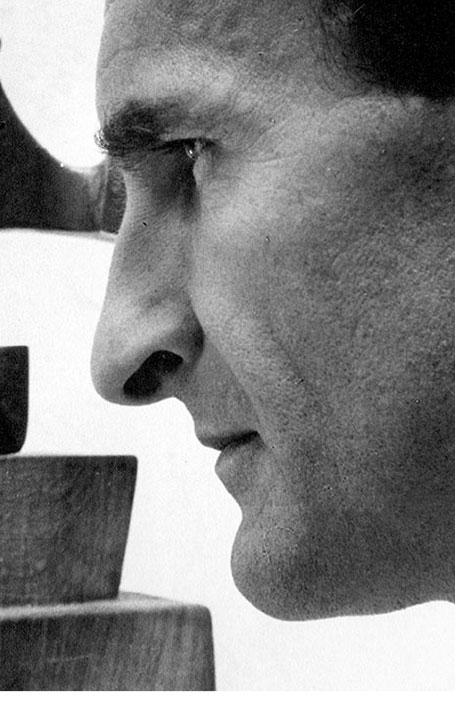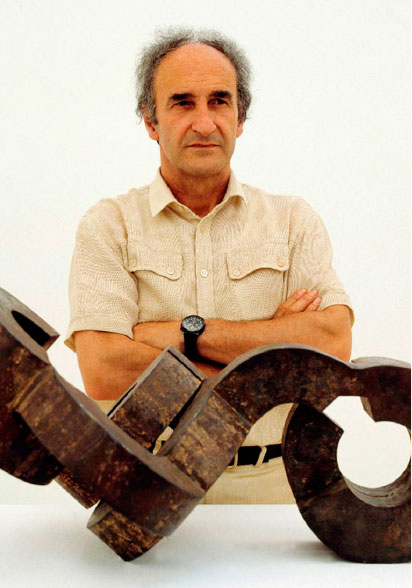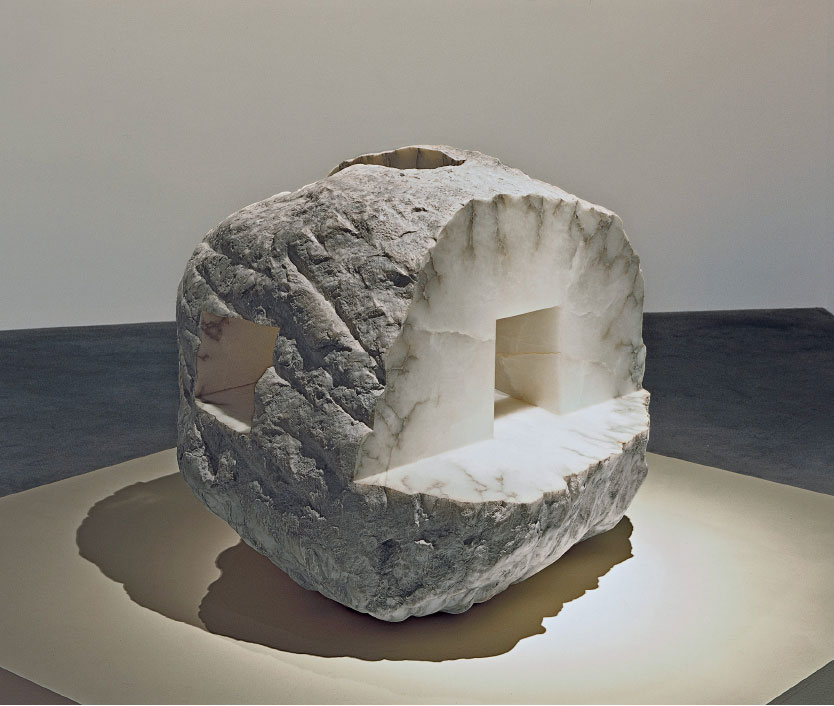Eduardo Chillida
1924
Eduardo Chillida is born on January 10 in San Sebastián
1943
Begins studying architecture
1947
Starts drawing in the Fine Arts Circle
1948
Moves to Paris. First plaster sculpture, Forma [Form]
1949
Has an exhibition at the Salon de Mai in Paris
1951
Returns to the Basque Country. First iron sculpture, Ilarik
1954
Has his first solo exhibition at the Clan Gallery in Madrid
1956
Has his first solo exhibition abroad at the Maeght Gallery in Paris
1958
Wins an international sculpture prize at the Venice Biennale
1960
Receives Kandinsky Prize
1961
Creates wooden sculpture, Abesti gogorra I [Rough Song I]
1963
Travels to Greece, becomes interested in light
1965
Creates first alabaster sculpture,
Homenaje a Kandinsky [Homage to Kandinsky]
1966
Has a retrospective at the Museum of Fine arts, Houston
1968
Has an installation of the sculpture Alrededor del vacío V [Around the Void V] outside The World Bank in Washington, D.C.
1971
Visiting Professor at Harvard University
1972
Creates concrete sculpture, Lugar de encuentros III [Meeting Place III], installed in the Paseo de la Castellana in Madrid
1973
Begins working with chamotte clay. First of the Lurrak [Earths] pieces
1977
Has an installation of the Peine del viento XV
[Comb of the Wind XV] in San Sebastián
1980
Has a retrospective at the Solomon R. Guggenheim Museum in New York
1984
Purchases the Zabalaga country house in Hernani
1985
Creates first Gravitations on paper
1990
Has an installation of the Elogio del horizonte
[Praise of the Horizon] in Gijón
1991
Awarded Praemium Imperiale in Japan
1994
Made honorary member of the Royal Academy
of Fine Arts of San Fernando in Madrid
1998
Has a retrospective at the Reina Sofía National
Art Center Museum in Madrid
2000
Inauguration of the Chillida Leku Museum in San Sebastián
2001
Became a member of the Academy of Fine Arts in Paris
2002
Dies on August 19 in San Sebastián



